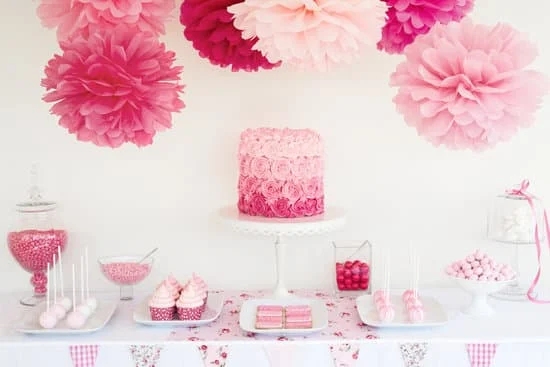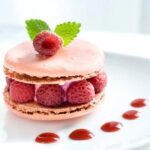Edible icing is a versatile and delicious medium used to decorate cakes, adding beauty and creativity to desserts. This specialized form of frosting allows for intricate designs, vibrant colors, and personalized touches that can elevate any cake from simple to stunning. Whether you are a professional baker or a novice at home, edible icing offers endless possibilities for creating visually appealing and delectable treats.
When it comes to cake decorating, the type of edible icing used plays a crucial role in achieving desired results. From buttercream to fondant, each variety of edible icing has its own unique characteristics in terms of taste, texture, and workability. Understanding the differences between these options is essential for selecting the right one for your specific cake design needs.
In this article, we will explore the various types of edible icing available in the market, highlighting their individual features and uses. Additionally, we will delve into the benefits of using edible icing for cake decoration, offering insights into why this method has become a popular choice among bakers worldwide.
Whether you are looking to enhance a special occasion cake or simply experiment with new decorating techniques, edible icing provides a versatile platform for unleashing your creativity in the world of confectionery artistry.
Types of Edible Icing
When it comes to decorating cakes, the type of edible icing used plays a crucial role in determining the final look and taste of the cake. One popular type of edible icing is buttercream, which is known for its creamy texture and versatility in decorating various types of cakes. Buttercream icing is made from butter, powdered sugar, and flavorings, making it a favorite choice among bakers for its smooth finish and ability to hold intricate designs.
Another common type of edible icing is fondant, a thick paste made from sugar, water, and sometimes gelatin. Fondant is rolled out into thin sheets and draped over cakes to create a seamless, polished look. This type of icing is ideal for creating elaborate decorations or sculpted cake toppers due to its pliable nature. Fondant can also be flavored or colored to match the theme of the cake.
Royal icing is another popular choice for decorating cakes with edible icing. It is made from egg whites or meringue powder, powdered sugar, and sometimes lemon juice. Royal icing dries hard and creates a smooth finish on cakes, making it perfect for intricate piping work or creating 3D decorations on cakes. Royal icing can also be used to create delicate flowers, intricate lace patterns, or personalized messages on cakes.
| Type of Edible Icing | Description |
|---|---|
| Buttercream | Creamy texture, versatile for various cake designs. |
| Fondant | Thick paste that can be molded into shapes or drapes over cakes. |
| Royal Icing | Dries hard with smooth finish; ideal for intricate designs. |
Benefits of Using Edible Icing for Cake Decoration
Using edible icing to decorate cakes comes with a multitude of benefits that make it a favorite choice among bakers and cake decorators alike. One of the key advantages of using edible icing is its versatility. Whether you’re looking to create intricate designs, smooth finishes, or colorful patterns, edible icing can easily be manipulated to achieve the desired look. This makes it an ideal choice for decorating cakes for various occasions such as birthdays, weddings, or holidays.
Another benefit of using edible icing for cake decoration is its ease of use. Unlike other decorating methods that may require specialized tools or techniques, working with edible icing can be simple and straightforward. With just a piping bag and some creativity, you can achieve professional-looking results that will impress your friends and family. Additionally, edible icing sets relatively quickly, allowing you to work efficiently without having to wait too long for your designs to dry.
Furthermore, edible icing offers a smooth and seamless finish that adds a polished look to your cakes. Whether you’re covering a cake in fondant or piping intricate designs with royal icing, the final result is often smooth and professional-looking. Edible icing also provides a blank canvas for creative expression, allowing you to experiment with different colors, textures, and techniques to create unique and personalized cake designs that are sure to wow your guests.
Tips for Working With Edible Icing
Working with edible icing to decorate cakes can be a fun and creative process, but it also requires some tips and techniques to achieve the best results. One important tip is to always make sure that your cake is completely cooled before applying the icing. This will prevent the icing from melting or running off the cake prematurely. Additionally, it is recommended to work with room temperature icing for easier application and smoother finish.
Another tip for working with edible icing is to knead and warm up the icing before use. This will make the icing more pliable and easier to work with, especially if you are using fondant or gum paste.
If your icing becomes too sticky, you can dust your hands and work surface with powdered sugar or cornstarch to help prevent sticking. Additionally, using a small amount of vegetable shortening on your hands can help prevent the icing from sticking as well.
When piping designs or decorations with edible icing, it is important to practice proper techniques for consistency. Make sure to use even pressure when piping and maintain a steady hand for clean lines and shapes. It can be helpful to practice on a separate surface before decorating your cake to ensure confidence and accuracy in your design. With these tips in mind, you can create beautiful and professional-looking cakes using edible icing as your decorative medium.
Popular Techniques for Decorating Cakes With Edible Icing
Decorating cakes with edible icing offers a plethora of creative possibilities to elevate the presentation of a cake, turning it into a work of art. While many may think that utilizing edible icing is limited to basic frosting techniques, there are actually a variety of popular and advanced methods that can take your cake decoration skills to the next level.
Buttercream Piping
One of the most common techniques for decorating cakes with edible icing is buttercream piping. This involves using a piping bag and various tips to create intricate designs, borders, flowers, and wording on the cake’s surface. Both beginners and experienced bakers can master this skill with practice and patience, allowing them to add personalized touches to their creations.
Fondant Sculpting
Fondant sculpting is another popular technique that involves rolling out fondant (a type of edible icing) into thin sheets and molding it into different shapes, figures, or 3D decorations for cakes. This method allows for more precise detailing and customization than traditional frosting, making it ideal for themed or special occasion cakes where intricate designs are desired.
Airbrushing
Airbrushing has gained popularity in recent years as a modern way to decorate cakes with edible icing. By using an airbrush gun loaded with colored food-safe paint, bakers can achieve gradient effects, shading, stenciled designs, and even intricate patterns on cakes. This technique offers endless possibilities for creativity and allows decorators to bring their artistic visions to life on cakes.
DIY Edible Icing Recipes
Buttercream Icing
One of the most popular DIY edible icing recipes is buttercream icing. This creamy and smooth icing is perfect for decorating cakes as it holds its shape well and is easy to work with. To make buttercream icing, you will need butter, powdered sugar, vanilla extract, and a bit of milk.
Simply whip the butter until it is light and fluffy, then gradually add in the powdered sugar and vanilla extract until you reach your desired consistency. If the icing is too thick, you can add a little milk to thin it out.
Royal Icing
Royal icing is another classic DIY edible icing recipe that many bakers use for intricate decorations on cakes. Made from confectioners’ sugar and egg whites or meringue powder, royal icing dries hard and is perfect for creating details like lace patterns, flowers, and lettering. To make royal icing, simply mix together confectioners’ sugar and meringue powder with water until stiff peaks form. You can adjust the consistency by adding more water if needed.
Fondant Icing
For a more professional-looking finish on cakes, fondant icing is a popular choice among bakers. Fondant can be rolled out into sheets and draped over cakes to create a smooth surface for decorating. You can also use fondant to make intricate decorations like flowers, bows, and figurines.
While store-bought fondant is readily available, you can also make your own DIY fondant with marshmallows, water, and powdered sugar. This homemade version has a softer texture than commercial fondant and is easy to customize with different flavors or colors.
Edible Icing vs Other Cake Decoration Methods
When it comes to decorating cakes, there are various methods and techniques that can be used. However, using edible icing stands out as a popular choice for many cake decorators due to its versatility and ease of use. Edible icing is a type of frosting that is specifically formulated to be safe for consumption and is commonly used to add decorative elements to cakes.
There are several benefits to using edible icing for cake decoration. One of the main advantages is that edible icing can be easily colored and shaped, allowing decorators to create intricate designs and patterns on their cakes. Additionally, edible icing provides a smooth and clean finish, giving cakes a professional look. Moreover, edible icing has a pleasant taste that complements the flavor of the cake itself, enhancing the overall eating experience for those enjoying the dessert.
If you are considering using edible icing to decorate your cakes, here are some tips to keep in mind:
- Ensure that your cake is completely cooled before applying the icing.
- Use a piping bag with different tips to create various designs such as rosettes, leaves, or writing.
- If you make a mistake while decorating, you can easily remove or adjust the edible icing before it sets.
Overall, when comparing edible icing with other cake decoration methods such as fondant or buttercream, edible icing offers unique advantages in terms of flexibility, taste, and ease of use. While fondant allows for sculpting detailed designs and buttercream provides a creamy texture, edible icing strikes a balance between these qualities by offering both pliability and flavor.
With its smooth finish and ability to hold intricate designs well, it’s no wonder why many bakers prefer using edible icing for their cake decorating needs.
Edible Icing
Some of the popular trends in using edible icing for cake decoration include:
- Watercolor Effects: Using edible food colors and a watercolor brush, decorators can create soft and blended designs on cakes reminiscent of watercolor paintings.
- Geode Cakes: By incorporating rock candy or isomalt crystals into the design, decorators can create stunning geode-inspired cakes that are both visually striking and delicious.
- Minimalist Designs: Embracing the less-is-more approach, minimalist cake designs featuring clean lines, simple shapes, and subtle color palettes have become increasingly popular.
These trends showcase the versatility of edible icing in cake decorating and how it can be used to bring creativity and innovation to any celebration. Whether you are looking to create a whimsical birthday cake or an elegant wedding cake, incorporating these trending techniques can help elevate your creations to new heights. Stay updated on the latest trends in edible icing decoration to ensure your cakes are always on-trend and visually captivating.
Conclusion
In conclusion, the use of edible icing to decorate cakes offers a unique and versatile way to add beauty and creativity to any dessert. With various types of edible icing available, such as buttercream, fondant, and royal icing, decorators have a wide range of options to choose from depending on the desired outcome of their design.
The benefits of using edible icing for cake decoration are numerous, including its smooth texture for creating intricate designs, its ability to hold up in different weather conditions, and its delicious taste that complements the cake underneath.
Working with edible icing may require some practice and patience, but with the right tips and techniques, decorators can achieve stunning results. Popular techniques like piping, stenciling, and sugar flowers can bring cakes to life and make them stand out at any celebration.
DIY edible icing recipes also allow bakers to customize colors and flavors according to their preferences or themes. And when comparing edible icing to other cake decoration methods like fresh fruit or chocolate ganache, its versatility and long-lasting effects shine through.
As trends in cake decorating continue to evolve, edible icing remains a classic choice for creating beautiful and memorable cakes. Whether it’s a simple birthday cake or an elaborate wedding masterpiece, the possibilities with edible icing are endless.
From elegant wedding cakes adorned with intricate lace patterns to whimsical birthday cakes featuring sculpted figurines, there is truly something for every occasion when utilizing this versatile medium. So next time you’re looking to impress your guests with a stunning dessert centerpiece, consider the beauty and versatility of using edible icing to decorate your cakes.
Frequently Asked Questions
What Kind of Icing Do You Use to Decorate a Cake?
The most common type of icing used to decorate cakes is buttercream icing. It is easy to work with, versatile, and can be flavored or colored in many ways to suit different preferences and themes for cakes.
What Is the Thing Used to Decorate Cakes Called?
The tools used to decorate cakes are called piping bags and tips. Piping bags are filled with icing and the tips control the flow of the icing to create various designs like flowers, borders, lettering, and other intricate details on cakes.
What Is the Best Frosting for Edible Images?
The best frosting for edible images on cakes is a smooth and flat surface like fondant or royal icing. These types of frostings provide a clean canvas for applying the edible image without any bumps or textures that can distort the image when placed on top of the cake.

Welcome to our cake decorating blog! My name is Destiny Flores, and I am the proud owner of a cake decorating business named Cake Karma. Our mission is to provide delicious, beautiful cakes for all occasions. We specialize in creating custom cakes that are tailored specifically to each customer’s individual needs and tastes.





